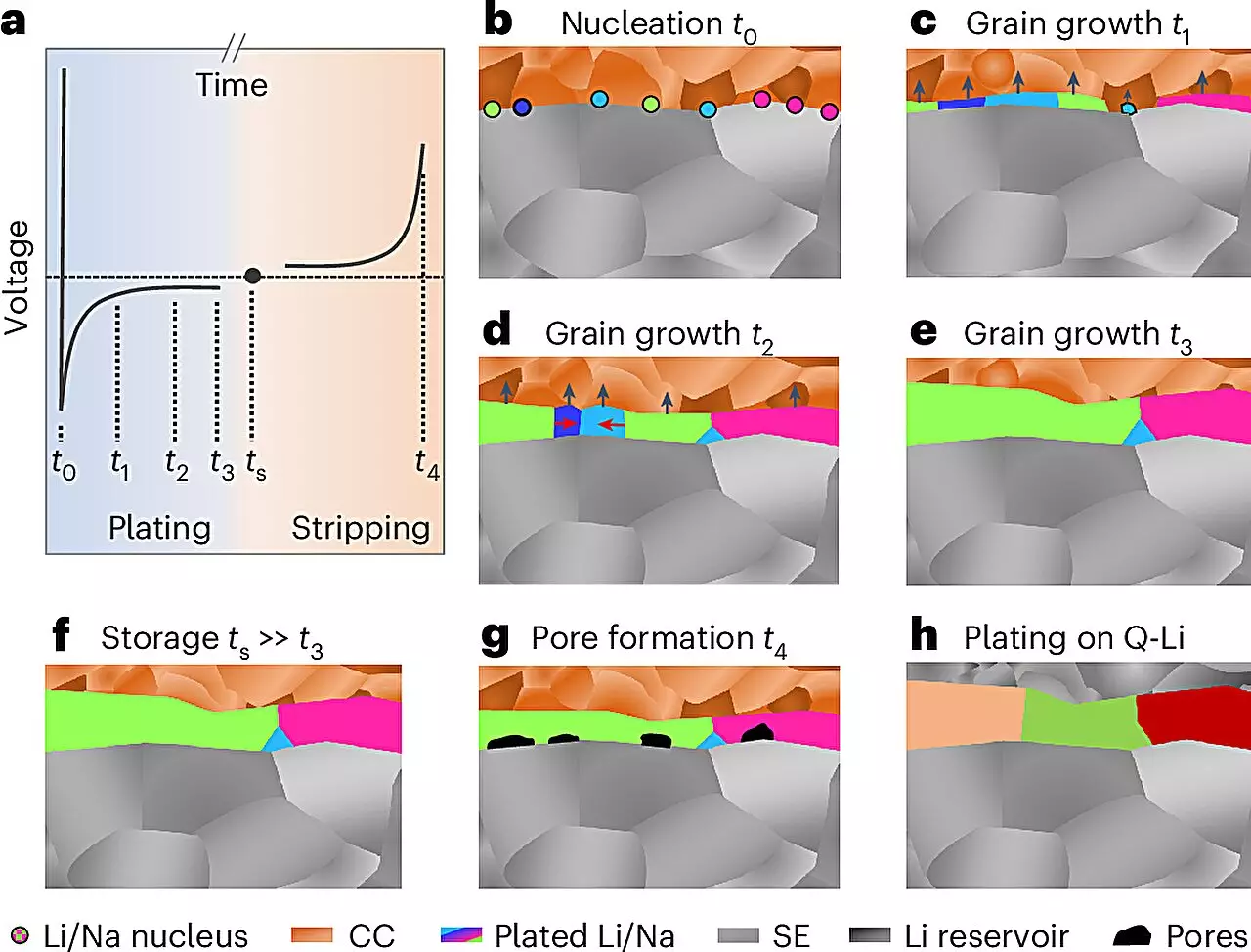The evolution of energy storage technology is at the forefront of scientific research, driven by the ever-increasing demand for efficient, safe, and sustainable power sources. Solid-state batteries, particularly those utilizing lithium and sodium metal anodes, are hailed as revolutionary solutions that can potentially surpass the limitations of conventional lithium-ion batteries. These solid-state systems promise enhanced energy density, improved safety, and greater longevity. However, the realization of these promises hinges on addressing significant challenges related to the microstructure of the alkali metals that form the core of these advanced batteries.
The recent groundbreaking research led by Justus Liebig University Giessen (JLU), in collaboration with prominent institutions in North America, has opened new avenues for understanding the intricate microstructure of lithium and sodium metals deposited in solid-state batteries. The internal structure, characterized by dimensions ranging from a few nanometers to several micrometers, is pivotal in influencing the electrochemical behavior and efficiency of these metals. Historically, the study of microstructural attributes in metals has enabled scientists to fine-tune properties for specific applications. However, alkali metals have posed unique challenges due to their high reactivity and tendency to form surface layers that hinder detailed investigation.
The innovative method developed by the research team utilizes a series of meticulously controlled preparation and analysis steps conducted at low temperatures and under inert gas conditions. By employing electron backscatter diffraction, the researchers successfully characterized the microstructure of electrochemically deposited layers of lithium and sodium, providing insights into their growth mechanisms.
These revelations mark a paradigm shift in battery research. Understanding how lithium and sodium form and behave at the microstructural level opens the door to improving battery design and performance. As Prof. Dr. Jürgen Janek, a key figure in this research, elucidates, the observed grain sizes in the metal layers offer critical insights into their growth process, which was previously elusive. This newfound comprehension allows researchers to explore methods to optimize the properties of these metals further, paving the way for enhancements in solid-state battery technology.
The collaboration among JLU, the University of California, Santa Barbara, and the University of Waterloo exemplifies the synergy required to tackle complex scientific questions. Such partnerships unite diverse expertise, accelerating the pace of innovation in fields that demand interdisciplinary approaches.
Despite the promising advancements, significant challenges remain in the practical application of lithium and sodium metal electrodes. The electrochemical cycling process can lead to undesirable changes in the metal structure. During the discharging phase, pores can form within the metal, while dendrites—microscopic, tree-like structures—can emerge during charging. These dendrite formations pose significant risks, as they can lead to short circuits, compromising the safety and functionality of the battery.
The ideal scenario involves limiting the formation of metal during the charging process to mitigate these concerns and prevent the complications associated with handling highly reactive alkali metal foils. Over the past decade, extensive research efforts have been devoted to overcoming these challenges, and the Giessen team has positioned itself among the leading global contributors to this field.
Looking ahead, the insights gleaned from this research will significantly influence the strategies employed in the ongoing development of solid-state batteries. The integration of ceramic solid electrolytes in conjunction with lithium and sodium metal electrodes holds promise for higher-performance energy storage systems. However, the scientific community must continue to address the inherent challenges related to the mechanical stability and reactivity of these metals during battery operation.
Prof. Janek’s research underscores the importance of collaborative investigations and sophisticated analytical techniques in advancing our understanding of battery materials. The successful interplay of chemists, materials scientists, and engineers is crucial for translating laboratory discoveries into commercially viable solutions that can eventually meet global energy demands.
The study of lithium and sodium microstructures heralds a turning point in the quest for high-performance solid-state batteries. With newfound insights into the microstructural characteristics of these reactive metals, researchers are better equipped to devise innovative strategies to enhance battery safety, efficiency, and longevity. As scientific exploration continues, the potential for solid-state batteries to transform the energy landscape becomes increasingly feasible, promising a future where clean, sustainable power is readily accessible.

